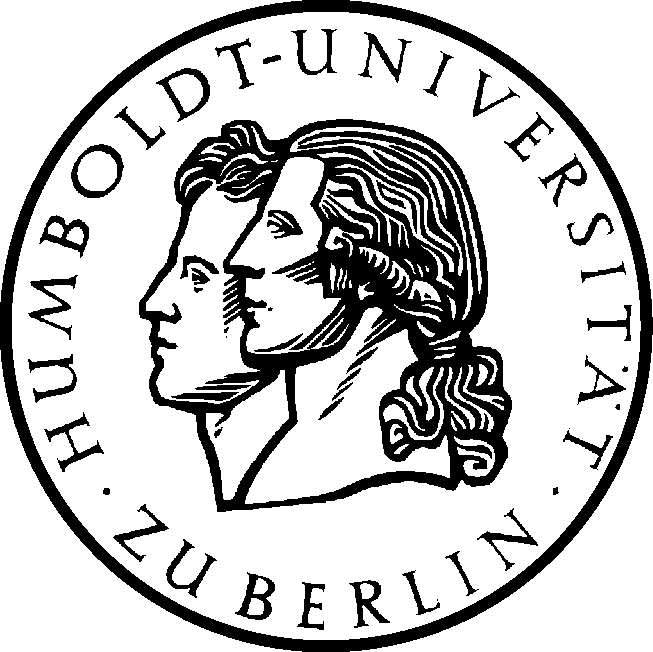Research, Hubert Truckenbrodt


| interface interactions –– wh-questions –– sentence types –– intonational meaning –– modals –– syn.-phon. interface –– f0 height –– for teachers –– neurolinguistics |
Research, Hubert Truckenbrodt |
 |
 |
|
Propositions formalize the content of the meaning of a clause. In unembedded position there is an additional speech act component. Similary with questions, where the question meanings of Karttunen (1977) or Groenendijk and Stokhof (1984) work for embedded and unembedded interrogative: a speech act component would be added to this meaning in unembedded interrogatives. How much of the addition of the speech act component is grammatically triggered?
Truckenbrodt, Hubert. 2004. Zur Strukturbedeutung von Interrogativsätzen. Linguistische Berichte 199. 313-350.
This paper suggests speech act components for different German interrogatives. It is written in German.
The following paper approaches the speech act component in terms of a set of licensing hypotheses that provide an approach to the different restrictions on the use and speech act meanings of a range of German sentence types. Certain features in C are hypothesized to license certain components of the speech act meanings. The feature triggering V-to-C-movement is part of this system.
Truckenbrodt, Hubert. 2006. On the semantic motivation of syntactic verb movement to C in German. In Hans-Martin Gärtner (ed.), Theoretical Linguistics 32, 257-306.
The preceding paper is commented in the same volume by a number of distinguished colleagues. A reply to these comments is also published in the same volume:
Truckenbrodt, Hubert. 2006. Replies to the comments by Gärtner, Plunze and Zimmermann, Portner, Potts, Reis, and Zaefferer. In Hans-Martin Gärtner (ed.), Theoretical Linguistics 32, 387-410.
The issue is approached from a different angle in the following paper, addressing only a part of the facts. It was assumed in the works above that V-final clauses, when serving as an unembedded speech act, have a reduced speech act component because of their paucity of speech-act-licensing elements in C. In the following paper, however, I argue that V-final clauses that serve as speech acts obey a restriction that is specific to them: They must be anaphoric/factive in a certain sense. This is not a speech act component but an independent restriction that is not shared with V2- and V1-clauses.
Truckenbrodt, Hubert. 2013a. Selbständige Verb-Letzt-Sätze. In Jörg Meibauer, Markus Steinbach & Hans Altmann (eds.), Satztypen des Deutschen, 232-246. Berlin: de Gruyter.
A new account of these V-final clauses as speech acts is completed in the following paper that appeared in the same volume.
Truckenbrodt, Hubert. 2013b. Satztyp, Prosodie und Intonation. In Jörg Meibauer, Markus Steinbach & Hans Altmann (eds.), Satztypen des Deutschen, 570-601. Berlin: de Gruyter.
The paper includes a specific suggestion about how the speech act component of V-final speech acts is contributed entriely by the special intonation (or other accompanying gesture) that they carry. In terms of the licensing-hypotheses of the 2006a,b papers above, this means that they have no morphosyntactic speech-act-licensing components in C at all. (I plan to return to the issue what this means for the system of licensing hypotheses. Some of it will still be applicable to V1- and V2-clauses, but this needs to be reassessed with the new results of the 2013 papers.)
The latter paper also more generally addresses interactions of sentence types with prosody and intonation: focus, intonation in exclamatives, root sentences and intonation phrases, meanings of intonation contours. Issues of particular interest may be (a) a new observation on initial stress in exclamatives, and (b) a simple account of rising [/] vs. falling [\] intonational meanings at the end of speech acts.
The new developments on this front come from combining the results of the doctoral thesis of Frank Sode (2014) with the ideas pursued in my earlier papers on this topic in the following joint work. (It is also listed under 'morphosyntax').
In the German example (i) the speaker presents himself as believing the proposition. In the example (ii) with reportative subjunctive Peter is presented as believing the proposition.
(i) Die Sonne hat geschienen. (ii) [Peter schwärmte von Mallorca.] Die Sonne habe die ganze Zeit geschienen.
In this paper we argue for a silent representation of a person's view of the world, a perspective. Where a proposition is related to this, it means that the person is presented as believing the proposition, as considering the proposition to be true. In (i) the speaker's perspective is represented like a silent pronoun and in (ii) Peter's perspective is represented in this way. In both examples the proposition is related to it. We place this suggestion relative to the semantic and philosophical literature, where it is close to previous suggestions by Heim (1992) and Schlenker (2005). We show in this paper that this is an entity that allows considerable new insights into a range of phenomena of German. It serves as a docking point for V1-parentheticals and as a docking point for modal particles. It is the feature in the C-position that carries a central part of the meaning of a declarative and it is a likely trigger of V-to-C movement. It licenses reportative subjunctive in a particular way. Furthermore, it allows for an analysis of the interaction of verbal mood (indicative, reportative subjunctive) with verbal position (V-final, V-in-C).
Frank Sode and Hubert Truckenbrodt. 2015. German root phenomena and the syntax of perspective. Manuscript, Universität Göttingen and ZAS Berlin.